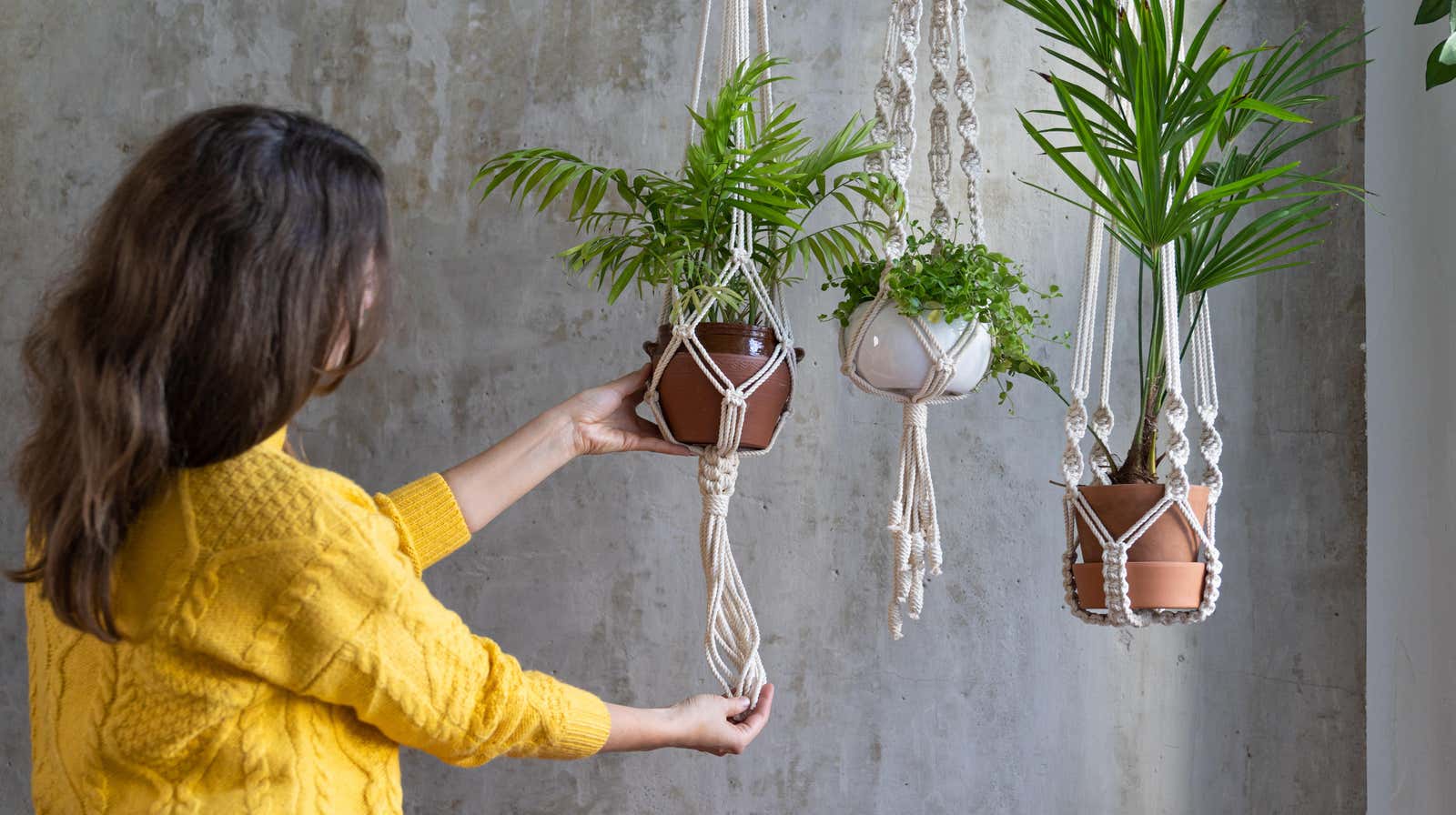The Best Cheap and Simple DIY Planters

Whether you’re trying to bring some freshness with houseplants or spruce up your porch or patio, the planter you use can make all the difference. Choosing pre-made baskets and pots is definitely one option, but they can be expensive and you may not be investing in long-lasting plants if you are buying ones that are already in bloom. But making your own planters is easier than you think, and it can also save you money.
Hanging wire baskets
One option for beautiful and inexpensive hanging baskets is to buy metal baskets and liners , potting soil , and plants that will grow well in them and bloom throughout the season. Wire hanging baskets are a good alternative to plastic ones because they are crack resistant and will last for years. Getting plants for your hanging baskets is a matter of taste, although you should look for plants that can grow in the size of basket you have and will be healthy with the amount of sun you get in the area they will be in. hanging in.
Impatients , fuchsias , and begonias are all flowers that can be grown in a hanging wire basket, but there are many other flowers that do well in pots. Finding discount plants at your local garden store can save you even more – sometimes plants come up on sale because they’re less visually appealing, but if you give them some water and good soil, they can perk up.
Hangers for macrame plants
Another option for a hanging planter is a combination of a macrame hanger with a pot. For this to work, keep in mind that you will need a pot that is the right size for your hanger. This is a great solution for both indoors and outdoors and can be used for many years. With this style of hanging planter, you have a large selection of color and type of pot and hanger, so you can easily match your existing decor. Terracotta , bamboo , and resin pots come in a variety of styles, colors, and sizes, so you’re sure to find something you love.
Macrame hangers also come in a wide variety, or if you can tie a few basic knots, you can make your own. Macrame string or cotton string from a hardware store are good options for making DIY pot hangers. It can be anything from a simple series of knots to intricate pieces of art, depending on your level of skill and patience. The advantage of making your own hanger and simply adding a pot is that you can hang the potted plant you already have or plant a new one.
Be sure to compare the weight capacity of your hanger with the weight of your basket after watering because the pot will be heavier when the soil is damp; try just holding the pot by the hanger with your hands while it’s damp before hanging it up.
Stands and pots for plants
To use pots that stand on the surface, there are a few things you can do to improve your thrift store find. Using a plant stand to create levels and make watering easier is one way to draw attention to the pot. If you have several mismatched pots, you can use spray paint to make them all the same color or just add a new color.
To add a pattern to a terracotta pot, you can use a marker and a stencil to make a motif or pattern. Just stick to materials that are used on the outside of the planter, not the inside, so you don’t accidentally poison the plants.
Repurposed Items
For interesting and inexpensive planters, you can also use other plant growing facilities. In principle, any container that can contain soil can be a container for plants. However, if you are repurposing other types of containers, make sure the soil has drainage. Drill or poke several holes in the bottom of the container.
For a simple item, a colander or sieve works great. It will hold the soil and already has drainage holes. In addition, it will probably have handles that can also be used to attach a hanger. Materials to avoid when thinking about repurposing other items for use as planters are materials that don’t hold up well to being wet over time, such as softwood or items that may contain lead paint because it can poison you. or your plants. Be careful with items that were painted before 1974. You can also avoid metal that can rust, as it can break down over time if used as a planter.